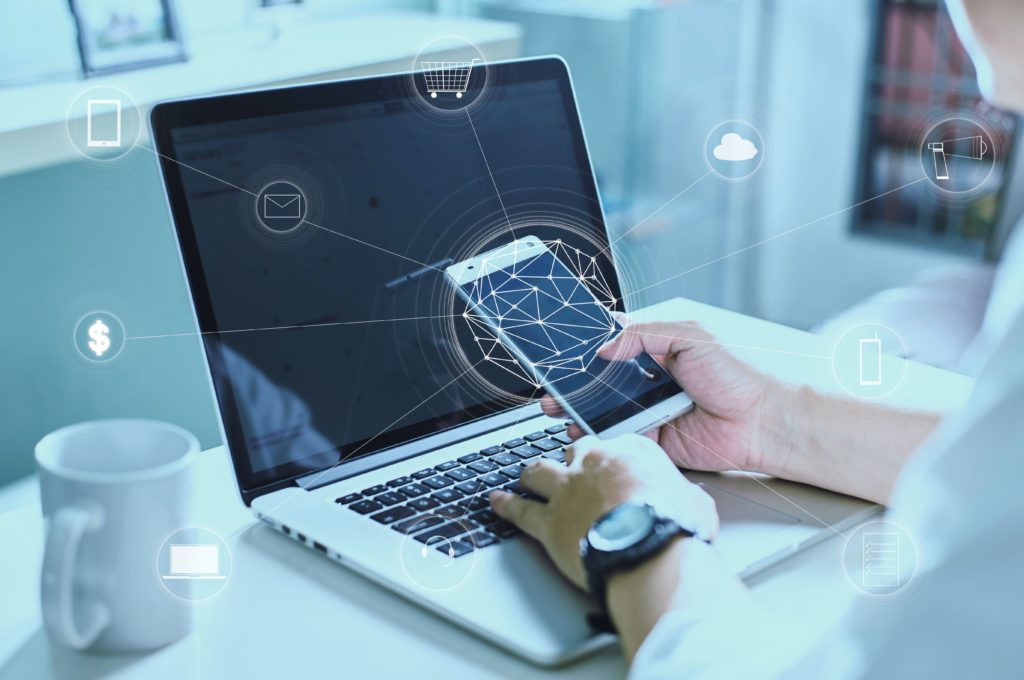
Summary
New social distancing requirements necessitate the need for contact-free retail. While manufacturers and retailers face headcount shortages due to COVID-19 safety measures and illness-related absenteeism, the pace of automation within the grocery sector is seeing a massive spike.
Advantage Perspective
In exploring some of the ways in which retailers across the globe are ramping up the deployment of technology throughout the value chain, we have identified two key trends:
- No-Touch Retail: The proliferation of apps and technologies designed to make queuing, payment and online delivery contact-free.
- Retail Robotics Solutions: The use of robots and AI to carry out labour-intensive tasks.1. No-Touch Retail
1. No-Touch Retail
A. Crowd-Control (physical distancing)
Many retailers are using technology to control the volume of shoppers that can be in their stores at any one time, as well as eliminating shoppers’ risk of exposure.
- Aldi Switzerland has introduced a smart display and digital counting system at the entrances of 110 stores. Once maximum occupancy is reached, a red screen appears telling the next shopper in line to refrain from entering. The screen changes to green as soon as someone exits the store.
- In Italy, there have been strict protocols capping the number of people per household permitted to leave their homes for essential shopping purposes and only for a specified amount of time. Local retailers have taken the lead in rolling out applications that allow shoppers to queue virtually.
→ Essulunga has launched an app that allows shoppers to reserve spots in line at some of its stores; sending them notifications when their turn has arrived.
→ Coop Lombardia and Coop Liguria have introduced an app-based solution that gives shoppers the ability to select between and reserve 30-minute time slots throughout the day to make their store visits. Not only does this reduce the need for lining up outside, but it also allows store managers to monitor the number, ages and occupations of those entering the store at different junctures so that they can be better prepared in terms of inventory and in-store services.
B. Contactless Payment Solutions
With many published studies reporting that the Coronavirus can live on hard services for up to 72 hrs, retailers are scrambling to make “tap and go” and app-based payment options more readily available.
- SPAR Austria has set up in-store kiosks where customers can purchase and top-up vouchers to replace cash payments.
- Woolworths Australia has disabled a requirement for shoppers making credit card purchases in excess of AUD$200 to enter a security PIN.
- In the US, Walmart has rolled out an app that alleviates the need for customers to touch a screen in order to select their preferred payment method at check-out.
C. Contactless Delivery:
Going beyond just providing customers with the option to have their orders left outside one’s door or at a designated drop off station, technology is playing a role in easing online shopper’s anxiety and expediting last-mile delivery.
- In China, where e-commerce is arguably the most technologically advanced and where the spread of the pandemic first started, it is no surprise that high-tech innovations are leading the way. For many meal and grocery delivery services, Chinese consumers can log into the delivery app and see the names and body temperatures of those who packed and are making the delivery.
- In the US, where the likes of Amazon, UPS and Walmart have been testing delivery drones, there is talk that the advent of COVID-19 could loosen some of the regulatory hurdles for wider scale roll-out as the need to deliver essential medicine and goods to vulnerable individuals becomes heightened.
2. Retail Robotics Solutions
The adoption of autonomous mobile robots (AMRs) in warehouses and fulfillment centers has been garnering popularity for some time now due to cost efficiencies, data capturing and computing capabilities.
The appearance of robots in physical store settings during open retail hours has been less prevalent, however, mainly due to negative connotations around job replacement and a limited number of use cases to justify the upfront capital investments.
As retail outlets suddenly face a staffing crunch due to COVID-19 related safety measures and illness related absenteeism, relying on robots for tasks such as floor cleaning and shelf stocking is gaining momentum. Deploying robots for labour-intensive tasks not only helps mitigate staffing shortages, but it also frees up in-store employees to shift their focus towards newly emerging priorities such as sanitizing high-contact surfaces and customer service by managing the flow of shoppers entering the store and queuing up for check-out.
Versus some of the app-based technologies that are emerging in the “no-touch” retail space, the pace and extent to which robots will replace the functions of in-store personnel once COVID-19 subsides is less certain, as scalability and capital intense investment requirements present rapid adoption constraints.
Nonetheless, the onset of COVID-19 should ease social concerns about the role of robotics in stores, especially if their application leads to improved health and safety standards and promotes stronger customer service during a time when shoppers are antsy and under duress.
Sources
- EXCLUSIVE: Walmart Unveils Grocery-Picking Robots In Test Store
- How 6 international grocers are tackling COVID-19
- How COVID-19 could accelerate the use of robots in retail
- How coronavirus could accelerate retailers’ robot deployments
- ALDI SUISSE is the first Swiss retailer to introduce an automatic counting system
- Coronavirus (COVID-19): latest updates from Italy
- Retailers Embrace Emerging Technologies Due to COVID-19
- COVID-19: The ultimate stress test for retailers
- Coronavirus Takes Over the Retail Industry – Autonomous Tech Comes to the Rescue
- SPAR Austria helps shoppers go cashless with voucher cards





